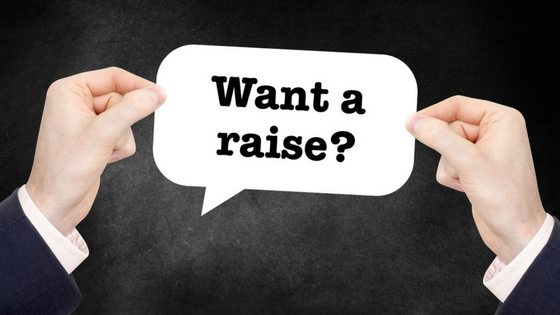
How much is the Head of Pricing Administrator Salary? 8 Ways to Avoid Working Harder for Less Money! 🥨
A recent article describing the war on wages in Australia discusses how salary stagnation over the last several years has greatly impacted Australian workers in terms of their work, wealth, spending, stress levels and family life. We were keen to explore if the war on wages has impacted pricing professionals as this article suggests. We ask the question for those in the head of commercial pricing analyst or pricing executive jobs regarding their average salary.
>Download Now: Free PDF Pricing Recruitment
Contrary to national wage trends in Australia, Taylor Wells talent advisory firm has placed VP level, Pricing Director, and Head of Pricing roles across Australia – Sydney, Melbourne and Brisbane – over the next 5 years with salaries exceeding the average CFO salary indicator of $486,989.
Talented pricing leaders and professionals with Competence, Accountability, Care and Integrity will always get paid more than the market average because they deliver significant results that impact margins and net profitability. It is key to understand customer value.
This year we have seen pricing leaders in Australia receive packages larger than an average CFO package > $500K+
We also see a downward wage trend happening in the Head of Commercial Pricing Administrator & Analyst Salary
At Taylor Wells, we found that pricing teams with lower salaries tend to come from businesses that have a culture that hasn’t been set up properly in the first place. We observe that pricing professionals – pricing analysts and managers – with lower wages (or minimal increases to base salary) tend to be in pricing support functions versus pricing decision functions.
Pricing teams that bring minimal impact on decision making (i.e., support function) tend to get paid less. This is compared to pricing teams that are central to decision-making and receive executive-level sponsorship or support.
When pricing teams or professionals fail to generate more revenue and margin, even the best efforts to fix broken pricing processes and systems go unrecognised. When pricing teams are involved in strategic decision making and achieve notable and consistent runs on the board, they get paid more.

Rewarding pricing decision teams
Businesses reward pricing decision teams because they fix big issues that improve organisational health and prosperity. The decision support system in pricing teams taps into a higher frequency that requires skill, dedication, competency, dedication and teamwork. They also do not get waylaid with minutia, politics point-scoring. Hence, they have one eye on the bigger game and keep their egos in check and have a high-performance mindset.
As a commercial pricing analyst, are you assertive?
For instance, under inflationary pressures, businesses have to increase their prices due to a lack of supply in materials or delays in deliveries, as the Covid-19 lockdowns have shown. As a pricing administrator, it’s crucial to know how you communicate the price changes to your customers in a timely manner.
Most customers understandably dislike price hikes but there are ways you can break it to them gently as you pass the extra costs onto them when necessary. Some companies still have to increase prices even after shouldering some of the expenses themselves.
Aside from technical skills that include problem-solving, negotiation, gathering data, analysis and interpretation, or structured query language, commercial pricing analysts need to know when to walk away from unprofitable deals to satisfy shareholders.
High-performance individuals find it extremely difficult to work in pricing support functions. Therefore, it’s in their DNA to achieve, get results and direct. They don’t wait for things to happen to them. Churn rates of high performing pricing teams and individuals in administrative businesses are around 23% and increasing.
Large traditional organisations have not quite learned how to handle high-performance teams or entrepreneurial thinkers for the best results. High-performance teams and entrepreneurial thinkers have not quite learned how to work in harmony with large, traditional businesses either – often battling to educate cost-plus businesses on the meaning and relevance of more sophisticated pricing approaches.
Both, however, could really benefit from joining forces simply to create an amazing diversity of thinking and experience.
Excel in Communication Skills and Leadership Display
Commercial pricing analysts are responsible for the efficiency of pricing policies and strategies within cross-functioning teams in sales, R&D, and marketing. A siloed organisation will often face inconsistencies than those that nurture an open communication platform of ideas, experiences, and suggestions.
Best Pricing Strategies: Head of Commercial Pricing Administrator & Analyst Salary
Part of a commercial pricing analyst’s job is to plan. Those in the head of pricing professions should identify:
- A company’s current pricing position method and revenue
- Financial goals will include sales forecasting, price predictions, and outcomes for each price point.
- How can you get there? What are the strategies that need to change in terms of marketing, budget, tech investments, and customer satisfaction?
- What changes and improvements can be made in the team culture and operations?
Are there ways to target your customers better, geographically using segmentation? There could also be areas for product and service quality improvement. Then you can use these key areas to leverage your pricing options.
Value-based pricing unlocks the key value drivers of customers, therefore, driving a positive brand reputation, margin and revenue growth, and customer loyalty. This helps you as a commercial pricing analyst to assess the value you offer to customers.
What problems are you solving for them? Why do they choose your product or service instead of your competitors? What could be the reasons that would make them switch (customer churn rate) and why? Sometimes, businesses that are entrenched in a cost-plus environment often mistakenly think that they’re employing value-based strategies.
8 Tips for Boosting the Head of Commercial Pricing Analyst & Administrator Salary
1. Be confident – have a well-structured pricing manager salary discussion with your boss – clearly demonstrate your value. It means you understand and believe that you will receive a salary review and promotion if two things have happened. You have earned these rewards and the business as a whole has performed well.
2. Only deal with people who have authority – it is pointless negotiating a higher salary with someone who doesn’t have the authority to make the deal during the negotiation.
3. Document and measure your goals, your team’s goals and targets. Get a line management agreement. Hence, apply metrics that make sense – i.e., align your goals with the overall direction the business is taking. No point in doing things that the business perceives as irrelevant.
4. Make sure these targets are reasonable. If they are not, then discuss an outcome that you can live with.
5. Challenge the pricing manager’s salary review. Don’t just accept it when you know that there could be a better outcome. Give yourself room and time to prepare and pluck up the courage for a difficult discussion.
6. Frame your achievements throughout the year. Maintain a diary of your achievements including examples where you have helped other team members or teams to sales/income success.
7. Those who work through difficult times are promoted more quickly. You might not get what you want this year but if you play it the right way you can set yourself up for a better chance of success next year.
8. Bosses are humans who make mistakes. Sometimes the boss is not always a mature or emotionally balanced individual. Some don’t often know how to handle reasonable requests. When this happens, you should be prepared to work your way through to the next level.
Excelling as a Pricing Executive – Job description
Commercial pricing analysts research and identify the best price point and strategies for B2Bs. They evaluate current market conditions, trends, pricing strategies of competitors, and buying patterns. Pricing executive jobs are a specialisation field and not an entry-level position. B2B clients may hire pricing professionals full-time or as consultants for a project-based period.
Data collection and interpretation are crucial skills for pricing executive jobs so they can accurately predict the times or seasons when they can charge for more, according to the supply and demand equilibrium. They should also display a balance as to when and how often to implement discounts and promotional offers without making customers too reliant on price cuts.
Apart from these duties, commercial pricing analysts also consider the budget and expenses of a company in order to make well-informed decisions on where to invest and optimise operations, the costs of developing and improving products or services, and marketing expenses.
These skills help pricing executive jobs to identify what products a business can launch and when is the best time to do so. They also work with sales management, finance, research and development, and marketing teams in order to come up with linear and uniform objectives in the decision-making process.
Currently, according to PayScale, there are more male commercial pricing analysts at 57.9% and 39.5% of females in the field with a salary ranging from $70,462 to $83,738 depending on the skills, years of experience, and capabilities required.
Head of Commercial Pricing Administrator and Analyst Salary
Based on the median (or gross pay calculator) of top job hiring website users, the estimated annual average salary for a head of pricing position in Australia ranges between $204,545 to $252,545. From the data, the annual additional pay which can come from commissions, bonuses, and incentives is $48,000 which falls within the 25%-75% of records available. Additionally, a price executive’s salary can range between $226,000 and $285,000 including bonuses, incentives, commissions, and other benefits.
To compute the commercial pricing analyst salary before tax deductions, overtime hours, and reimbursements:
- The number of hours worked
- Multiplied by the hourly rate
- For overtime pay calculation, multiply the number of hours worked with the overtime rate.
- The regular rate and overtime rate are then combined to calculate a specific period of time.
For instance:
Number of hours worked paid * hourly pay rate = total pay
40 hours * 25 per hour = $1,000
Annual salary / number of pay periods = total income per perioid
$35,000 annually / 25 days = $1,400
War on wages – Is it true?
Much of the article on the war on wages suggests that pricing manager salary stagnation is a result of economic and financial pressure, including our insatiable appetite for debt via overpriced housing, expensive car loans, luxury goods, etc.
Over the past ten years, Australian businesses and workers have experienced tough economic times:
- Australians are used to coping with an onslaught of tasks each day.
- We have become anesthetised to being constantly busy, working for minimal reward, recognition or increase in salaries as the article “War on Wages” graphically describes.
However, Taylor Wells also finds that the large range in salaries relates to variations in business and individual performance. When businesses perform, they tend to pay more and offer bigger bonuses.
One of every business leader’s corporate goals is to achieve excellent annual performance. Research shows that it is best to be a star performer in a boom rather than in a downturn. However, employees can’t risk being too selective with their achievements. This could result in large scale disruption across all industries as businesses eliminate more staff.
Nurture a learning and coaching environment
High-performance pricing teams and individuals take accountability (and all the pressure this involves) for the team and organisational performance. Naturally, they see it as their responsibility to help and coach others to be better. Therefore, they get paid more for authentic leadership and competence.
At the same, it’s not all down to individual performance either. It’s time Australian organisations respond appropriately, ethically, and fairly to evidence of wage stagnation in Australia. This means rewarding high performance when there is clear evidence of it.
Many businesses use outdated salary bands regardless of team or individual performance. Many HR departments also use outdated KPI indicators and frameworks even for commercial team leaders. HR teams are often reluctant or hamstrung to go outside established parameters or policy. Sometimes, compliance with rules can stifle innovation and encourage a culture of ‘coasting’.
Research from MIT Sloan Management Review recently revealed that companies that were creative and open to learning new and flexible approaches advocated a learning environment of price realisation and orientation. Focusing on these two areas enabled participants to unlock better pricing strategies and revenue growth than their competitors.
Our research at Taylor Wells shows that with the right set-up and pricing team in place, incremental earnings gains can begin to occur in less than 12 weeks. In 6 months, the team can capture at least 1.0-2.25% more margin using better price management processes. After 9-12 months, businesses are very often generating between 3-7% additional margin annually as they identify more complex and previously unrealised opportunities, efficiencies, and risks.
Selective under-performance: Head of a Commercial Pricing Analyst & Administrator Salary
Selective under-performance will just not cut it in today’s business environment. Now, people are working hard just to keep their jobs. Conversely, when team members exceed their targets, they receive a higher salary and are offered bigger bonuses. Strange as it may seem, there are a lot of pricing professionals out there who find it difficult to quantify and defend their value to the business.
A surprisingly high percentage of pricing professionals hate dealing with sensitive issues at work – including pay-rise discussions. An underlying cause is related to personality and leadership. Our research shows, for example, that many pricing professionals don’t see it’s their place, role, or responsibility to take accountability for team performance – both positive and negative.
Not taking accountability or even blaming others for team underperformance is an excellent defence mechanism. Furthermore, shifting accountability to someone else preserves our sense of self-esteem by avoiding awareness of our own flaws or failings. Blame is a fundamental human cognitive bias or fundamental attribution error that only damages work relationships.
〉〉〉 Get Your FREE Pricing Audit 〉〉〉
Bottomline
Talented pricing leaders and professionals with Competence, Accountability, Care, and Integrity are always paid more than those on the market average. It’s because they deliver significant results that impact margins and net profitability.
Businesses paying a lower pricing manager salary tend to have not properly set up a pricing team in the first place. Bad bosses never get far and their luck will run out. Very few people show evidence, facts or examples to convey accountability for individual and team performance. Conflict aversion does not solve any issues either.
For a comprehensive view on building a great pricing team to prevent loss in revenue,
Download a complimentary whitepaper on How to Build Hiring Capability To Get The Best Pricing Team.
Are you a business in need of help to align your pricing strategy, people and operations to deliver an immediate impact on profit?
If so, please call (+61) 2 9000 1115.
You can also email us at team@taylorwells.com.au if you have any further questions.
Make your pricing world-class!
Related Posts
Leave a Reply Cancel reply
Categories
- marketing strategy (20)
- Organisational Design (14)
- Podcast (114)
- Pricing Capability (68)
- Pricing Career Advice (10)
- Pricing Recruitment (15)
- Pricing Strategy (199)
- Pricing Team Skills (10)
- Pricing Teams & Culture (15)
- Pricing Transformation (25)
- Revenue Model (10)
- Sales Effectiveness (15)
- Talent Management (5)
- Technical Pricing Skills (29)






